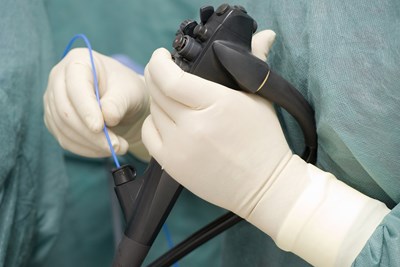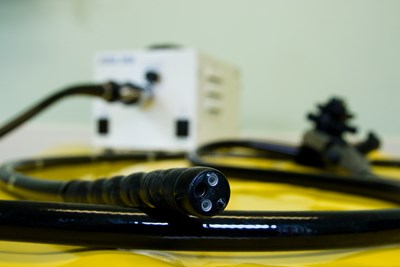An endoscopy is probably one of the most dreaded medical procedures, and no wonder! Although there are multiple types of endoscopies, the ones that most commonly come to mind are those referred to as a sigmoidoscopy or colonoscopy, which involve inserting a camera into the rectum. However, these are not the only kind, and sometimes an endoscopy is essential for good health.
Types of Endoscopy
An endoscopy is anything that uses an endoscope, which is a small tube with a camera and light on the tip, to see inside of the body. As the endoscope moves along, it sends images onto a small color monitor for the doctor’s viewing. Although an endoscope is sometimes used for surgery as well, these are not technically endoscopies.
There are multiple varieties of endoscopy. An arthroscopy uses an endoscope to look into the joints, a bronchoscopy the lungs, a cystoscopy or ureteroscopy the urinary system, and a laparoscopy for the abdomen. Colonoscopy, sigmoidoscopy, and gastrointestinal upper endoscopy are all used to examine different parts of the digestive and gastrointestinal tract, and this article focuses primarily on them, as they are some of the most common.
A colonoscopy and sigmoidoscopy are both performed through the rectum to examine the lower half of the digestive tract. The difference lies in the extent of the exploration. While the focus of a sigmoidoscopy is the lining of the lower part of the large intestine, a colonoscopy may go all the way through the colon. An upper endoscopy (or “esophagogastroduodenoscopy” to be technical), however, is sent into the mouth and down the throat, so the doctor can examine the esophagus, stomach, and small intestine.
An endoscopic ultrasound combines these two technologies, and endoscopic retrograde cholangiopancreaticography (ERCP) takes pictures of organs like the gall bladder. While even a family doctor can perform a sigmoidoscopy, a specialist known as a gastroenterologist is generally in charge of the other types of gastrointestinal endoscopies.
Reasons for an Endoscopy
Endoscopies can evaluate and treat issues in the digestive tract and even take biopsies, if necessary. Any number of issues may require an endoscopy in its varying forms. An upper endoscopy may be performed if you are experiencing stomach pain to look for its cause. Endoscopies are also used to examine and assess ulcers, growths or polyps, digestive tract bleeding, or gastritis. If a patient has noticed a sudden change in bowel movements, such as chronic diarrhea or constipation, an endoscopy may be able to locate the cause. Even problems swallowing can be diagnosed in this way.
Treatment via endoscopy is performed by sending devices through to manage the problem, specifically bleeding. If polyps are present, they can be removed in a similar way. If gallbladder stones get out of the gallbladder, ECRP allows the removal of them from the bile duct. A biopsy is the removal of a small piece of tissue, so it can be tested for any diseases that might be present (such as cancers). This too can be done with the use of an endoscope.
Risks of a Endoscopy
Anesthesia is used only in very extreme circumstances (and often with young children), as doctors usually opt for a mild sedative. This relieves even the risks that come with the use of anesthetic, although the effects of the sedative are usually present into the next day, so driving and other dangerous activities should be avoided for at least twenty four hours. A reaction to the sedative used is always possible, however, so make sure to inform your doctor of any allergies or previous reactions you have experienced.
As a result of the endoscopy itself, infection is possible, as with anything that internally introduces a foreign object to the body. There may be tearing, or perforation, of the walls of the organs, and some bleeding may occur. When an ECRP is performed, pancreatitis is a possibility. Compared to many procedures, however, endoscopies are very low risk procedures.



